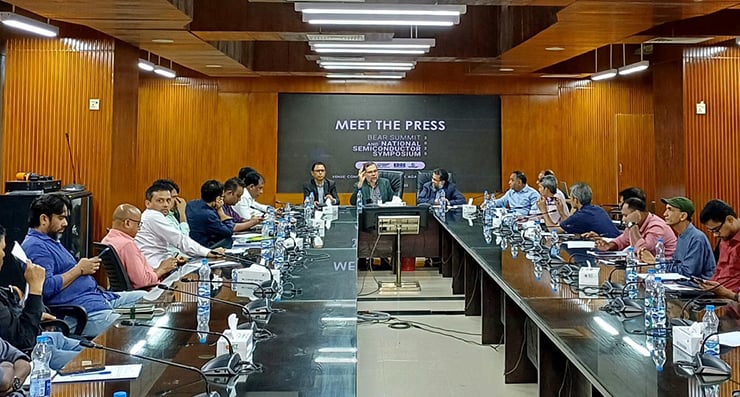Reimagining Management Education: The Role of Quantum Mechanics as a Metaphorical Lens for Complex Leadership

The dynamic and uncertain business landscape of the 21st century challenges traditional linear models of management education. Rooted in classical physics, many conventional approaches assume predictability and control—assumptions increasingly invalidated by complex global realities. This conceptual paper explores how principles from quantum mechanics—such as uncertainty, entanglement, and superposition—can serve as powerful metaphors to inform modern management thinking. By introducing quantum-inspired frameworks, educators can help future leaders embrace uncertainty, navigate interconnected systems, and manage paradoxes constructively. The paper proposes practical ways to integrate these ideas into management curricula, equipping graduates to lead adaptively in volatile and complex environments.
Keywords: Quantum mechanics, management education, uncertainty, complexity, quantum leadership, systems thinking
Introduction
For decades, management theory has borrowed from classical physics to shape organizational design and decision-making models. This mechanistic perspective emphasizes linearity, predictability, and clear cause-effect relationships. However, in an era marked by volatility, uncertainty, complexity, and ambiguity (VUCA), linear thinking alone is insufficient for preparing managers to handle complex adaptive systems.
Quantum mechanics, the branch of physics that studies the behavior of matter and energy at subatomic scales, challenges deterministic worldviews with concepts like uncertainty, entanglement, and superposition. Although business leaders are not expected to apply quantum equations, these ideas can serve as valuable metaphors, reshaping how managers understand uncertainty, interconnectedness, and multiple realities.
Core Quantum Principles and Management Insights
Uncertainty and Probabilistic Decision-Making
Heisenberg’s Uncertainty Principle fundamentally changed the scientific understanding of measurement and predictability (Heisenberg, 1958). Metaphorically, this encourages managers to accept that perfect information is rarely available. Management educators who emphasize probabilistic thinking can help students develop comfort with ambiguity and make informed decisions under uncertainty (Senge, 1990).
Entanglement and Organizational Networks
Quantum entanglement demonstrates that particles can remain linked regardless of distance, so that an action on one instantly influences another. This mirrors the reality of modern organizations: teams, departments, and stakeholders are deeply interconnected, and decisions reverberate across the system (Wheatley, 2006). Understanding entanglement can help future managers design collaborative, resilient systems.
Superposition and Navigating Paradoxes
The principle of superposition implies that particles can exist in multiple states simultaneously until observed. In management, this resonates with the need to hold seemingly contradictory ideas or multiple stakeholder perspectives at once. Leaders who adopt this mindset can leverage diverse views to foster innovation and creative problem-solving (Zohar & Marshall, 1994).
Quantum Leadership and Organizational Agility
Zohar (1997) argues for quantum leadership, a framework that values adaptability, intuition, and emergent strategy over rigid control. This perspective aligns with viewing organizations as living systems, where self-organization and learning enable resilience in the face of rapid change (Stacey, 1996; Capra, 1996).
Pedagogical Implications for Management Curricula
Integrating quantum-inspired ideas into business education does not require teaching physics formulas. Instead, instructors can:
- Use metaphors to stimulate new ways of thinking about uncertainty and networks.
- Incorporate case studies and simulations that illustrate complexity and unpredictability.
- Encourage reflective practices to help students build comfort with ambiguity and paradox.
- Apply systems thinking and scenario planning exercises to model non-linear dynamics (Scharmer, 2009).
These strategies align with experiential and transformative learning approaches that better prepare managers for complexity.
Conclusion
As organizations become more complex and uncertain, management education must evolve accordingly. Quantum mechanics offers a rich source of metaphors that can challenge linear thinking and help leaders embrace complexity, interdependence, and paradox. Integrating these principles into curricula equips graduates with the mindset and skills needed to lead adaptively in an unpredictable world.
References
Capra, F. (1996). The web of life: A new scientific understanding of living systems. Anchor Books.
Heisenberg, W. (1958). Physics and philosophy: The revolution in modern science. Harper & Row.
Scharmer, O. C. (2009). Theory U: Leading from the future as it emerges. Berrett-Koehler.
Senge, P. M. (1990). The fifth discipline: The art & practice of the learning organization. Doubleday.
Stacey, R. D. (1996). Complexity and creativity in organizations. Berrett-Koehler.
Wheatley, M. J. (2006). Leadership and the new science: Discovering order in a chaotic world (3rd ed.). Berrett-Koehler.
Zohar, D. (1997). Rewiring the corporate brain: Using the new science to rethink how we structure and lead organizations. Berrett-Koehler.
Zohar, D., & Marshall, I. (1994). The quantum society: Mind, physics and a new social vision. William Morrow & Co.
Writer: Ex Vice Chancellor, MAKAUT
 ঢাকা টাইমস অনলাইন এর সর্বশেষ খবর পেতে Google News ফিডটি ফলো করুন
ঢাকা টাইমস অনলাইন এর সর্বশেষ খবর পেতে Google News ফিডটি ফলো করুন
মন্তব্য করুন













































